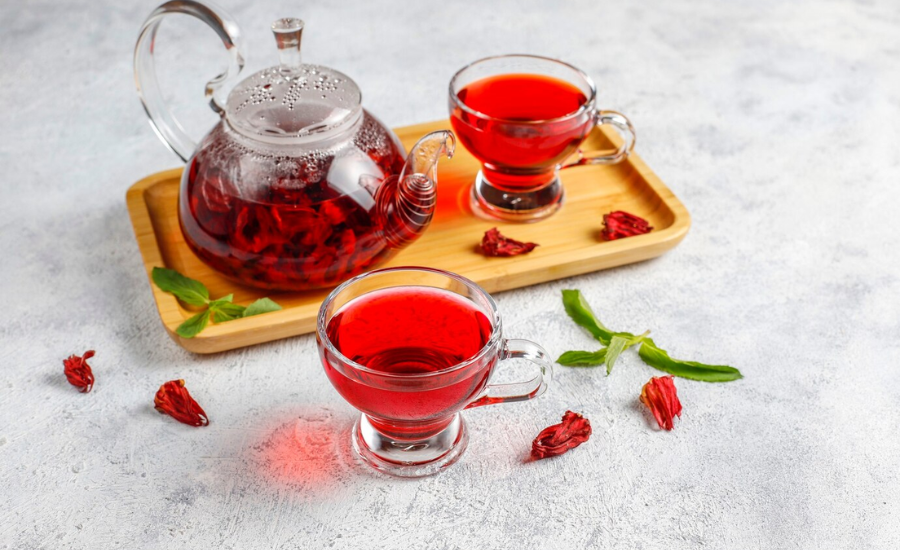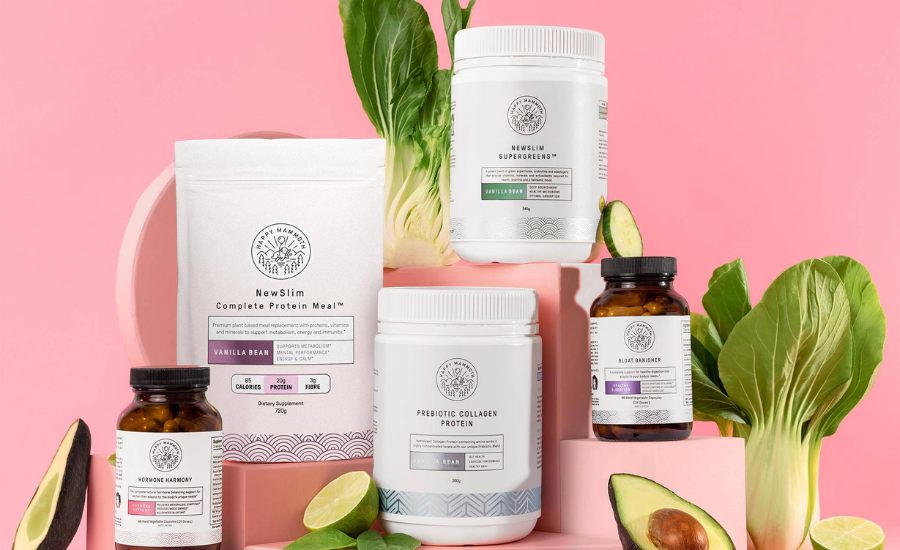Tea has been a beloved beverage worldwide for centuries, with each culture embracing unique blends and rituals. Among the many varieties, Red Rose Tea holds a special place due to its rich flavor, cultural significance, and numerous health benefits. In this comprehensive guide, we will explore the origins of red rose tea, its health benefits, and how to prepare the perfect cup at home.
What is Red Rose Tea?
Red rose tea is a delightful infusion made from the dried petals and buds of the red rose plant. Unlike traditional black, green, or herbal teas from the Camellia sinensis plant, rose tea is entirely floral, offering a unique blend of sweetness and subtle tartness. It is often consumed for its refreshing flavor and soothing qualities, both of which are derived from the natural oils and antioxidants present in rose petals.
Red rose tea can be enjoyed on its own or blended with other teas for added flavor and depth. While the term “red rose tea” may specifically refer to tea infused with red rose petals, it may also be found in various blends that combine black tea leaves with rose petals to create a more robust tea-drinking experience.
The History of Red Rose Tea
The history of red rose tea dates back centuries, with origins steeped in the ancient cultures of China, Persia, and the Middle East. In traditional Chinese medicine (TCM), rose petals were believed to have therapeutic properties that could balance the body’s energy or “qi” and alleviate stress. Similarly, Persian and Middle Eastern cultures have long used roses in their culinary practices and beverages, including tea, to promote relaxation and enhance the beauty of dishes.
In the West, the use of roses in tea became popular in the 19th century, when floral flavors became fashionable among the aristocracy. Today, red rose tea is enjoyed by tea enthusiasts around the globe, whether for its therapeutic benefits, fragrant aroma, or simply as a beautiful, floral refreshment.
Health Benefits of Red Rose Tea
One of the reasons red rose tea has become increasingly popular in modern times is due to its numerous health benefits. Here are some of the key reasons why drinking red rose tea is a great addition to your daily wellness routine:
1. Rich in Antioxidants
Red rose tea is packed with powerful antioxidants, primarily polyphenols, and flavonoids, which help protect the body from oxidative stress. These antioxidants neutralize free radicals that can cause cell damage and inflammation and even contribute to chronic illnesses such as cancer, heart disease, and aging. Regular consumption of red rose tea can help improve overall health and prevent various diseases linked to oxidative damage.
2. Supports Digestive Health
Drinking red rose tea can be beneficial for your digestive system. Its natural compounds help stimulate the production of bile, which aids in the breakdown of fats and promotes smoother digestion. Additionally, red rose tea has been used as a remedy for constipation and indigestion for centuries. Its mild laxative properties help regulate bowel movements and reduce bloating, making it a great choice after heavy meals.
3. Reduces Stress and Anxiety
Roses are widely known for their calming and mood-enhancing properties, and red rose tea is no exception. The soothing aroma of rose petals can help alleviate stress, anxiety, and even symptoms of depression. Drinking a cup of red rose tea in the evening can help you unwind after a long day, promoting relaxation and improving sleep quality. Some studies also suggest that rose tea can help reduce cortisol levels, the stress hormone, leading to a more balanced emotional state.
4. Boosts Skin Health
The beauty benefits of red rose tea are well-known, especially for improving skin health. Thanks to its high vitamin C content, drinking red rose tea regularly can improve your skin’s texture and glow. Vitamin C is essential for collagen production, which keeps the skin firm, smooth, and youthful. Additionally, the anti-inflammatory properties of red rose tea can help reduce redness, irritation, and acne, giving your complexion a clearer, healthier appearance.
5. Supports the Immune System
Red rose tea contains significant amounts of vitamin C, a vital nutrient that plays a key role in supporting immune function. Regular consumption of vitamin C can help strengthen the body’s natural defenses against infections and illnesses, such as colds and flu. By drinking red rose tea regularly, you are giving your immune system an extra boost to fight off harmful pathogens and maintain overall health.
6. Improves Heart Health
The antioxidants and anti-inflammatory properties of red rose tea may also contribute to heart health. Studies suggest that the polyphenols in red rose tea can help lower cholesterol levels and reduce the risk of cardiovascular diseases. Additionally, its calming effects can help regulate blood pressure, reducing the risk of hypertension and other heart-related conditions.
How to Brew the Perfect Cup of Red Rose Tea
Brewing red rose tea is simple, but like all great teas, there are a few tips and techniques that can help you achieve the best flavor and experience. Here’s a step-by-step guide to brewing the perfect cup of red rose tea:
1. Ingredients You’ll Need
- Dried red rose petals or rosebuds (organic is recommended)
- Freshly boiled water
- Optional: honey, lemon, or a cinnamon stick for added flavor
2. Steps for Brewing
Step 1: Select Quality Roses
Make sure to use dried red rose petals or buds that are free from pesticides and other chemicals. Organic rose petals are best for ensuring that the tea you consume is safe and free from harmful substances. You can often find these in health food stores, specialty tea shops, or online.
Step 2: Measure the Tea
For one cup of tea, use about one tablespoon of dried rose petals or two to three whole rosebuds. If you prefer a stronger flavor, you can add more petals or buds to suit your taste.
Step 3: Boil Water
Bring fresh water to a boil and allow it to cool slightly before pouring over the rose petals. Using water that is too hot can burn the petals, resulting in a bitter taste. Aim for a water temperature of around 90°C (194°F).
Step 4: Steep the Tea
Pour the hot water over the rose petals and cover the cup or teapot to trap the heat and allow the petals to release their flavor. Let the tea steep for 5 to 10 minutes, depending on how strong you like your tea.
Step 5: Strain and Serve
Once the tea has steeped to your liking, strain the petals and pour the tea into your cup. You can enjoy it as is or sweeten it with a little honey, add a slice of lemon for a citrusy twist, or a cinnamon stick for warmth.
Red Rose Tea Recipes and Variations
Red rose tea is versatile, and you can get creative with different blends and variations to suit your mood or occasion. Here are a few ideas to inspire your next cup of tea:
1. Iced Red Rose Tea with Mint
Perfect for a refreshing summer drink, this variation combines the cooling properties of mint with the floral notes of red rose tea.
Ingredients:
- Dried red rose petals
- Fresh mint leaves
- Ice cubes
- Honey or sweetener (optional)
Instructions:
- Brew a strong cup of red rose tea using the method described above.
- Allow the tea to cool to room temperature, then refrigerate until chilled.
- In a glass, add ice cubes and fresh mint leaves.
- Pour the chilled tea over the ice and garnish with extra mint leaves for a refreshing twist.
2. Rose and Hibiscus Tea
For a slightly tangy and floral combination, try mixing red rose tea with dried hibiscus flowers. This tea blend is rich in antioxidants and vitamin C.
Ingredients:
- Dried red rose petals
- Dried hibiscus flowers
- Honey or agave syrup (optional)
Instructions:
- Combine equal parts of dried rose petals and hibiscus flowers.
- Brew the tea as described above, steeping for about 7 to 10 minutes to fully extract the flavors.
- Strain and serve hot, or chill for a refreshing iced tea version.
3. Spiced Rose Chai
For a warming and fragrant tea, try blending red rose tea with traditional chai spices like cinnamon, cardamom, and cloves.
Ingredients:
- Dried red rose petals
- Cinnamon stick
- Cardamom pods
- Cloves
- Black tea leaves (optional)
- Milk or plant-based milk (optional)
Instructions:
- In a pot, add water and spices (cinnamon, cardamom, cloves) and bring to a simmer.
- Add black tea leaves (if desired) and red rose petals, then reduce heat and simmer for 5 minutes.
- Strain the tea into a cup and add milk or a milk substitute for a creamy chai experience.
Choosing the Right Red Rose Tea
When selecting red rose tea, it’s important to choose high-quality, organic petals or buds. Not all rose petals are suitable for consumption, and those treated with pesticides or other chemicals can be harmful. Look for organic, food-grade rose petals that are specifically meant for brewing tea. Additionally, some tea shops offer blends of black tea and rose petals for a more robust flavor profile, which can be another excellent option for tea enthusiasts who enjoy both floral and traditional tea flavors.
Conclusion
Red rose tea is not just a beautiful and fragrant beverage; it is also a powerhouse of health benefits, from improving skin health and digestion to reducing stress and boosting the immune system. Its delicate flavor and versatility make it a perfect tea for both relaxing moments and social gatherings.
Whether you enjoy it hot or iced, with added herbs and spices, or as a simple cup of fragrant petals, red rose tea is a timeless and enjoyable addition to any tea collection. So the next time you’re looking to unwind, support your health, or simply indulge in a fragrant cup of tea, reach for red rose tea and experience all that this wonderful floral infusion has to offer.
Stay informed with more news and visits on the way: Blog Merk!







Leave a Reply